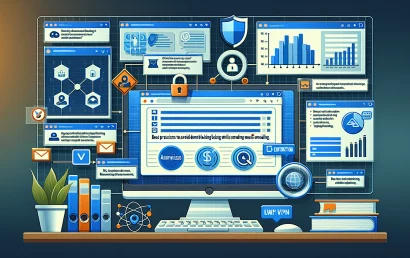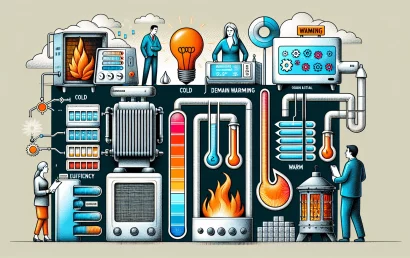Stages of Domain Warm-Up

In the world of email marketing, one of the most crucial steps to ensure successful campaigns is the process of warming up your domain. This practice involves gradually increasing the volume of emails sent from a new domain to build a positive reputation with email service providers (ESPs). Without proper warming, your emails are more likely to end up in spam folders, harming your outreach efforts and overall brand reputation.
Understanding the stages of domain warming is essential for marketers who wish to optimize their email campaigns. Each stage plays a vital role in establishing trust and credibility with ESPs, which in turn affects deliverability rates. In this article, we will explore the various phases involved in warming up a domain, providing insights and best practices to help you navigate this critical process effectively.
Understanding the Stages of Domain Warming
Initial Setup
The first step in the domain warming process is the initial setup. It involves creating a new email domain that is separate from your existing domains. This new domain should be properly configured with DNS records, including SPF, DKIM, and DMARC. These records help authenticate your emails and signal to ESPs that your messages are legitimate.
“A well-configured domain is the foundation for successful email deliverability.”
Gradual Email Sending
Once your domain is set up, the next stage is gradual email sending. Start by sending a small number of emails each day, gradually increasing the volume over a few weeks. This slow ramp-up allows ESPs to recognize your sending patterns and assess your domain's reputation. Aim to engage with your audience by sending relevant and valuable content, which will further enhance your domain's credibility.
Engagement Monitoring
During the warming process, it’s crucial to monitor engagement metrics. Keep an eye on open rates, click-through rates, and bounce rates. High engagement signals to ESPs that your emails are wanted and valuable, while low engagement can negatively impact your sender reputation. Adjust your strategy based on these metrics to ensure you're on the right track.
Building a Positive Reputation
As you continue to send emails, focus on building a positive reputation for your domain. This involves not only sending valuable content but also actively managing your email list. Remove inactive subscribers and ensure that your list consists of engaged recipients. A clean list will help maintain high engagement rates and, consequently, a strong sender reputation.
“A positive reputation is built on trust, engagement, and consistent value.”
Finalizing the Warming Process
After several weeks of consistent and engaged email sending, you should reach a point where your domain is considered warm. At this stage, you can begin to increase your sending volume significantly without the risk of being flagged as spam. However, it’s important to continue monitoring your metrics and maintaining best practices to ensure ongoing deliverability.
Main advantages and disadvantages
Advantages and Disadvantages of Domain Warming
Warming up your domain is a vital step in email marketing, but like any strategy, it comes with its own set of advantages and disadvantages. Understanding these can help you make informed decisions about your email campaigns.
Advantages
- Improved Deliverability: Warming up your domain significantly increases the chances of your emails landing in the inbox rather than the spam folder. This leads to higher open and click rates.
- Enhanced Sender Reputation: By gradually increasing your email volume and maintaining high engagement, you build a positive sender reputation with email service providers.
- Better Engagement Metrics: Sending relevant and valuable content to a targeted audience during the warming process can lead to improved engagement metrics, which further boosts your reputation.
- Long-Term Success: A well-warmed domain sets the foundation for successful email marketing campaigns in the future, allowing for larger-scale outreach without compromising deliverability.
Disadvantages
- Time-Consuming: The warming process requires patience and consistency, often taking several weeks to achieve optimal results.
- Requires Monitoring: Continuous monitoring of engagement metrics is necessary to ensure that your warming strategy is effective, which can be resource-intensive.
- Risk of Mistakes: If not done correctly, domain warming can lead to negative consequences, such as poor deliverability or being flagged as spam, especially if the sending volume increases too quickly.
- Initial Low Volume: During the initial stages, the low volume of emails sent may not yield immediate results, which can be discouraging for marketers looking for quick wins.
Thematic table
| Stage | Description | Best Practices | Duration | Key Metrics to Monitor |
|---|---|---|---|---|
| Initial Setup | Creating a new email domain and configuring DNS records (SPF, DKIM, DMARC). | Ensure proper DNS setup and authentication to build credibility. | 1-2 days | N/A |
| Gradual Email Sending | Start sending a small number of emails daily, increasing volume over time. | Begin with 10-20 emails per day, gradually increase by 10-20% weekly. | 2-4 weeks | Open rates, click-through rates |
| Engagement Monitoring | Track the engagement of recipients with your emails. | Analyze engagement metrics and adjust content accordingly. | Ongoing | Open rates, click-through rates, bounce rates |
| Building a Positive Reputation | Focus on sending valuable content and maintaining a clean email list. | Remove inactive subscribers and target engaged recipients. | Ongoing | Engagement metrics, sender score |
| Finalizing the Warming Process | After several weeks, increase sending volume significantly. | Continue to monitor metrics and maintain best practices. | 4-6 weeks | Deliverability rates, engagement metrics |
Let's summarize the category:
Warming up a domain is a crucial process for anyone looking to engage in effective email marketing. By following the structured stages of domain warming, marketers can significantly enhance their chances of successful email deliverability and engagement. Each stage, from the initial setup to the finalization of the warming process, plays a vital role in building a positive reputation with email service providers.
Proper execution of the warming process can lead to numerous benefits, including improved deliverability rates, higher engagement metrics, and a stronger sender reputation. However, it is essential to approach this process with patience and diligence, as rushing through the stages can lead to negative consequences.
“A well-executed domain warming strategy not only protects your email campaigns but also sets the stage for long-term success.”
As you navigate through the stages, remember to monitor key metrics closely. Engagement rates, open rates, and bounce rates provide valuable insights into how your audience is responding to your emails. Adjusting your strategy based on these metrics will further enhance your efforts and ensure that your domain remains in good standing with ESPs.
In summary, understanding and implementing the stages of domain warming is essential for any email marketer aiming to achieve effective outreach. By prioritizing best practices and maintaining a focus on engagement, you can cultivate a thriving email marketing strategy that yields positive results over time.





